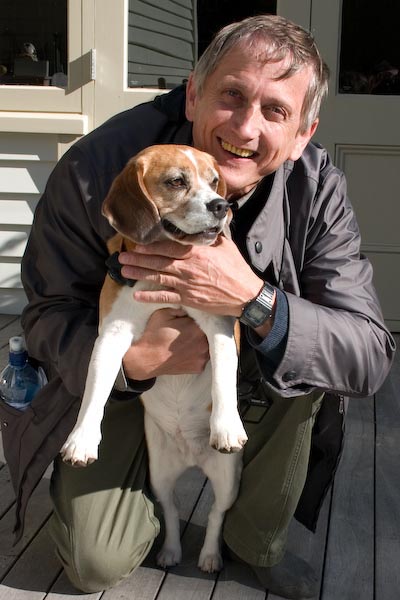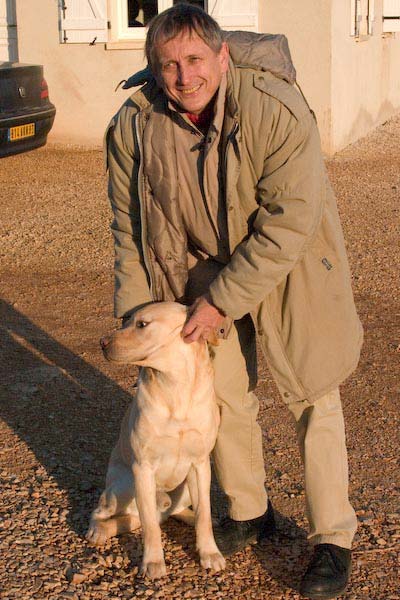There's a tradition, born of the marketing skills of Giacomo Morra, the man who put Alba on the map, of using the large white truffles that are found in most seasons to promote the business. The latest technique is to hold an international charity auction, with people bidding from around the world - and very effective it is. This year's 1.5kg monster sold for 125,000 Euro to Gordon Wu, a Hong Kong property developer, who plans to use it all at one banquet this week. At least he won't let it rot, as one poor London restaurateur did a few years ago...
November 06
A love of Italian white truffle is facilitated by extreme wealth, as the Daily Mail discovered when it reported on a £25 white truffle ice-cream served at Luciano (review) in St James, London.
The dish was created for the London based Russian billionaire Boris Berezovsky, a regular at Luciano and a man whose love of truffles knows no bounds. Maitre d' George Perendes said: "When he is having truffle risotto and I get to his table it's 'come on, George, keep shaving - don't worry about the price'." That price, incidentally, is £1,700 a kilogram when the truffles come from Piedmont in Italy.
I once had a spectacularly awful truffle sorbet, but then it wasn't being served at one of Marco Pierre White's restaurants. When I have some good bianchetto to play with, ice cream might be worth a try...
The European truffle season is getting into full swing, and I've been getting behind with On The Farm's coverage. Here's a couple of interesting catch-up items. The Toronto Star offers a look inside the Universita dei Cani da Tartufo (Truffle Dog University) at Roddi in Italy. Their training technique is possibly a little expensive:
"We play hide and seek ... with truffles," says Monchiero, who has been running the school for 23 years. "First, we let the dogs sniff the truffles and eat them because if they don't like them, they'll never be a good hunter." Once they get the taste, Monchiero puts truffles in sacks and hides them. When the dogs find them, they are rewarded with other treats ... meat or cheese. "Then they learn that they don't have to eat the truffles, just find them," he says.
And truffle cultivation is moving steadily northwards in Europe, now reaching Finland, according to the Helsingen Sanomat:
"In the Mikkeli region in Southern Finland, ten or so truffle cultivation farms were set up last year, in which truffle mycelium was planted among the roots of oak trees. Now Shamekh aims to start a new project in Åland, which should be an ideal location for trufficulture, thanks to the maritime climate and the calciferous soil. Shamekh compares Åland with the Swedish island of Gotland further south, where naturally-growing truffles were spotted in three different locations in the late 1990s."
Dr Shamekh organised a truffle cultivation workshop in Finland last month, and our very own Ian Hall gave paper. I'm resolutely sceptical about the Finn's chances with melanosporum, but they've probably got a good chance with aestivum.
Following on from my post about the sources of weather information that I actually find useful (as opposed to Ken's almanac, which isn't) I stumbled across MetService's "new" rural weather service. I'm not sure how new it actually is, or why it took me so long to find it, but the features it provides look excellent. I am particularly enamoured of the fact that Waipara is given its own forecast - a nifty little three day forecast generated every hour, together with a ten day outlook which is just about perfect for planning farm work. There's also a seasonal outlook, which I shall follow with interest.
The NIWA summary for October is now available, and as I've updated my spreadsheet of Ken's forecasts of rain and sun for New Zealand's four main centres against what actually happened. No surprises, really. He gets one out of four on rainfall, and three out of four on sunshine (being generous), which again puts him at 50% - way below his claimed accuracy of better than 80%.
Readers of NZ Geographic might notice that they've published a letter from me in response to the Brenstrum/Ring exchange in the previous issue. This is what I said...
"I read with great interest Ken Ring's defence of his "moon method" of weather forecasting in NZG #81. I've also been taking a look at how well Mr Ring's forecasts work, and have reached conclusions very similar to Erick Brenstrum (NZG #79). Mr Ring's almanac provides "estimates" of monthly rainfall and sunshine hours for many towns in NZ, and I have compared his forecasts for the four main centres with the actual outcomes (taken from NIWA's excellent monthly climate summaries) for the year to date. So far, he is doing no better than the easiest forecast - that rainfall in any given month will be the same as the long term average. His success rate (marked generously) is about 50%, or little better than chance. I've posted the full details on my "Ringworld" blog, which also includes details of an analysis of Ring's weather maps for 2005 by NIWA scientist Jim Renwick. Mr Ring's maps bear the same relationship to the actual weather at the time as maps selected at random from the same period in previous years. Mr Ring is a staunch defender of his forecasts. "I can prove they work about 85% of the time" he wrote in his riposte to Brenstrum's analysis in NZG #81, yet we now have three separate and independent analyses which suggest they work no better than chance. If Mr Ring is to retain any credibility as a weather forecaster, he should produce his proof, or ask his publishers to label his almanac as a work of astrology, to be placed in that section of the nation's bookshops."
Still no news from Ken about the studies that support his claim.

Sometimes only beagles are good enough, as I finally persuaded Pierre Sourzat yesterday. Pierre is one of France's top truffle scientists, based at the La Station Trufficole du Montat between Cahors and the truffle market at Lalbenque, and he is a labrador man. Sadly deluded, of course, but I could tell he was warming to Peg during his tour round Limestone Hills. Next time, he should bring Bou Bou for a little competition...

Pierre with Bou Bou, France, December 2005
Australia's truffle growers are finally getting their act together and forming their own grower's association, and I'd like to wish them well and congratulate Wayne Haslam, their first president, for getting it all together. Their inaugural special general meeting is taking place on December 9th in Canberra, and if I didn't have a prior engagement I'd be there like a shot. The NZTA has always welcomed Australian members, and I'm sure the ATGA will welcome us when we turn up at their conferences to drink their wine and eat their truffles.
After a bit of a literary interlude, back to some SF. The sequel to Dan Simmons' massive Ilium, which wove the Iliad and The Tempest into science fiction, via a cast of Greek gods living on Mars interfering in the Trojan Wars. Same massive scale as the opener, and although it takes a while to pick up all the threads, Simmons manages to pull everything together at the end. It feels as though it was a struggle - the last few sections feel sort of limp and listless after the excitements of the Trojan War and the hero's affair with Helen of Troy.
Over at the NZ CSC, I've been chasing Ken to provide me with details of three studies that he says support his claimed forecast accuracy. A while ago (Oct 13) he posted this:
"A prominent secondary school team did a science project that studied me for 3 months at a MOTAT exhibition sponsored by NIWA. They came up with 87%. A Massey University project gave me 85-91%. Auspacwx ran a Random Number Generator against me, and gave me above 80%. I am happy with 85% and it seems to be average. Metservice give themselves about the same most of the time."
I did some Googling and found this site, where Aussie weather follower Carl Smith took Ken's forecasts for Australia (provided by Ken to the austpacwx discussion list) and compared them to what actually happened. Carl's exhaustive effort showed that Ken was doing quite well for the first half of the month, but then the wheels fell off, and under Carl's scoring system he ended up with about 50% - more or less the same as my rainfall and sunshine analysis.
I've since been chasing Ken to provide details of the "Massey University study" in which he did so well, but he seems reluctant to provide any data. The school science fair project is similarly mysterious. Following up on Carl Smith's work, I found another exercise Carl had conducted, this time examining how well several noted astrometeorologists did on predicting the weather over the Sydney Olympics. Ken's work was included, and he was second best in show - scoring 60% on Carl's system, behind US forecaster Carolyn Egan, whose work we noted earlier [link].
To be fair to Carl (and to Ken), I should note that Carl believes there may be something to the forecast methods used by Ken, but that it needs refinement. In an email to me, copied to Ken and which Ken decided to post at the NZ CSC he said; "I do think Ken is on to something with the Moon as a factor in long range forecasting, however I also think Ken has more work to do with regards to sorting out just what contribution the Moon makes, and how and where that plays out in the real world." Carl also provided me with links to two papers (here, here)[links] by Charles Keeling & Timothy Whorf of the Scripps Institute in California, who postulate a relationship between long term lunar and solar tidal cycles and climate. Unfortunately for Ken, they explicitly rule out the mechanism he proposes drive the weather (atmospheric tides): "We focus on oceanic tides, because the atmospheric tides are too small to be of practical importance in comparison" (Keeling & Wharf, 1997).
Meanwhile, I'm still waiting for details of the Massey "study". I'll pass on the school science fair project. Having helped out with one or two of those in my time, I know how interesting they can be. But I wouldn't stake my career on the accuracy of their results.

.jpg)


